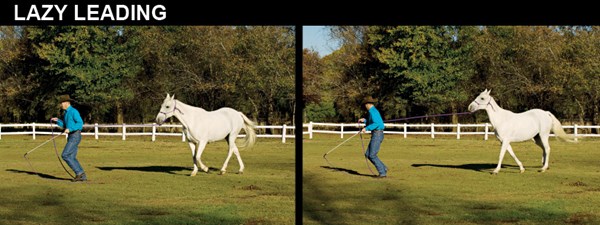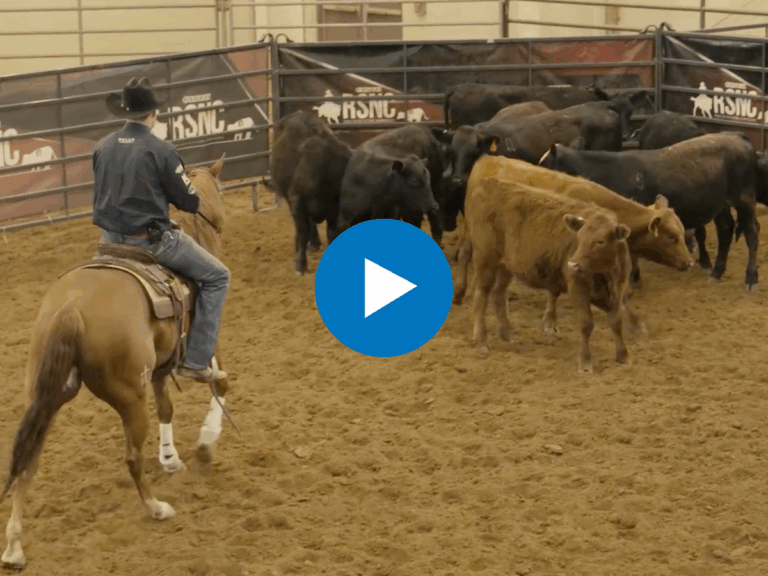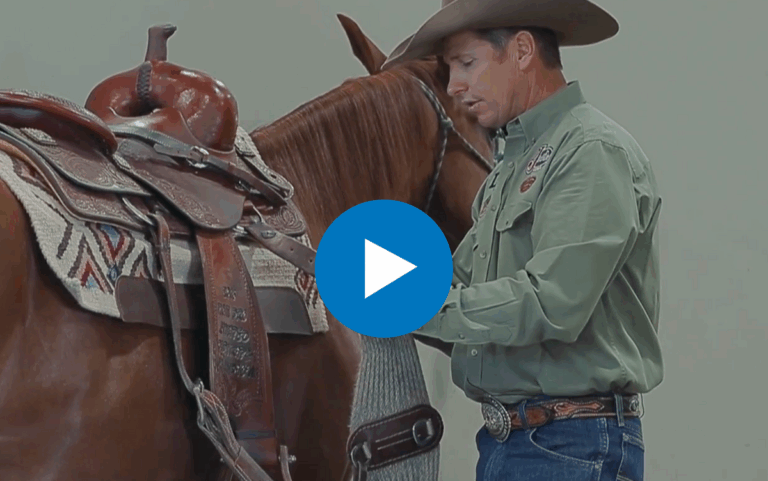A horse that leads well adjusts his pace to match yours, so that he stays next to you at all speeds. Some horses, however, have developed such a habit of moving slowly that they really hang back on the lead line. You find yourself practically having to drag them forward. If your horse is like this, your first goal is to wake up his feet, so that when you step briskly ahead of him, he follows you with equal quickness.
[LEARN MORE: Get the rest of Clinton Anderson’s Training Methods.]
Clinton Anderson: Lessons Well Learned: Why My Method Words for Any Horse
Training on the Trail: Practical Solutions for Trail Riding
Clinton Anderson Downunder Horsemanship: Gaining Respect and Control on the Ground, Series 1
Clinton Anderson Colt Starting Training Kit
(As an Amazon Associate, we earn from qualifying purchases made through affiliate links.)
That’s what we’ll do with this month’s clinic horse, an 8-year-old Spotted Saddle Horse mare. Her quiet disposition and smooth, lateral gait (she paces instead of trots, as you’ll see) make her a great lesson horse for special-needs kids. But she does need to learn to be more responsive on the lead line.
I’ll ask her to follow me briskly when I trot ahead of her. When she resists, I’ll wake up her feet with some of my “longeing for respect,” which emphasizes changes of direction more than the repetitive circles of traditional longeing.
Longeing for respect is a terrific form of groundwork that’s useful for many purposes. For example, it’s a great way to prepare an overly keen horse before you ride him. It stimulates the thinking side of his brain (because of all the foot movement in the changes of direction), increases his respectfulness (because you’re directing the movement of his feet), and works off his excess energy.
But it’s also extremely useful for lazy horses. When you insist on prompt responses to your longeing requests to stop, turn, and move off in the new direction, you’re teaching the lazy horse that when you say “let’s go,” you really mean it. You’ll see how it works with this mare—after I wake up her feet with a bit of longeing for respect, she’ll be much more responsive on the lead line.
TO GET THE MOST FROM THIS CLINIC
- Outfit your horse in a rope halter with a 14-foot lead. I prefer my own halters, which have extra knots on the noseband for improved responsiveness, but any of the stiffer rope halters will do. If you don’t have a training stick, you can make one of your own (using a sturdy, 4-foot-long stick), or else use a dressage whip.
- Work in an enclosed area with good footing, such as a round pen or arena.
- Make this exercise part of your daily routine until your horse consistently and automatically follows you willingly and with energy when you ask him to.

LEFT: This mare is moving at a snail’s pace, so I’ve stepped ahead of her and put pressure on the lead line to ask her to follow briskly.
RIGHT: Instead of picking up the pace, however, she’s simply hanging back and bracing against the line with a raised head and neck.

TOP LEFT:The solution to this mare’s lazy response is to wake up her feet and insist that she listen to me, using “longeing for respect.” I point with my lead hand to show her the way I want her to go, then wave the stick or tap her shoulder with it to start her forehand moving in that direction, in a circle around me.
TOP RIGHT:After she’s circled me just once or twice, I ask her to stop and face me in preparation for changing direction. I stop her by bringing my lead hand sharply in to my belly button. (If she hadn’t responded, I’d also have slapped the ground with the stick to insist that her hindquarters swing away from me, off the circle.)
BOTTOM LEFT: Now, I’ve switched the lead line to my other hand as I ask her to begin circling, or longeing, in the opposite direction, indicating the new way I want her to go with my new lead hand. (If need be, I’ll reinforce the cue by waving the stick or tapping her shoulder with it to encourage her forehand to come around.)
BOTTOM RIGHT: I continue longeing her energetically like this for several minutes, frequently changing directions. If your horse drags at a trot, send him on at a lope, as I am here, to get his energy up. Once he’s paying close attention to you and his feet are more lively, stop the longeing and return to asking him to lead properly.






